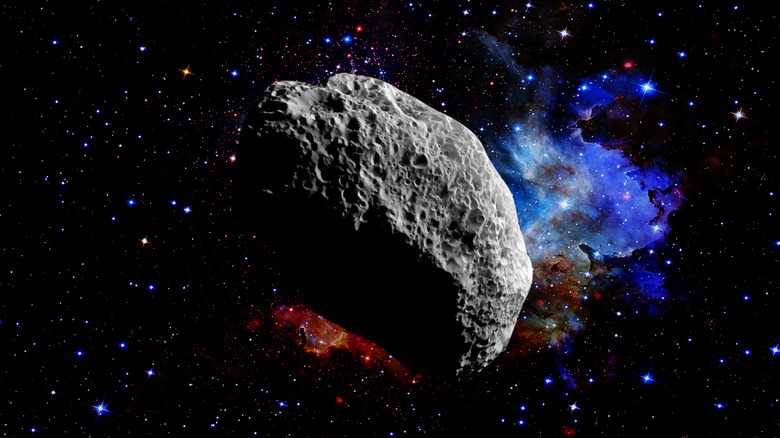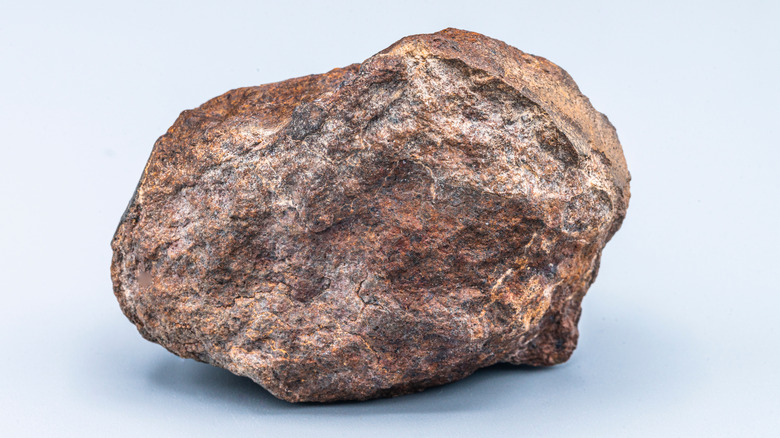Scientists Found The Building Blocks Of DNA And RNA In Meteorites. Here's What That Means
It's been a long-held belief that many of the key ingredients needed for the creation of life on Earth came from outer space. The source behind these ingredients was thought to be meteorites that landed on the planet billions of years ago. Studies carried out on fallen space rocks over the course of the last century have confirmed the presence of several nucleobases — vital for storing genetic information in DNA and RNA — on these meteorites. Among the bases that have been detected on meteorites include adenine, guanine, and uracil. However, two key ingredients that are essential for confirming this theory — cytosine and thymine — have continued to elude scientists. Without establishing the presence of these compounds on these space rocks, it was nigh impossible for researchers to substantiate the long-held theory about life on Earth having a cosmic connection.
A recent development, however, is all set to change this. Advancements in detection and extraction techniques have finally led scientists to detect cytosine and thymine on four meteorites that fell to the Earth sometime in the late '60s.
New detection techniques
The group of researchers that conducted the study included Daniel Glavin, an astrochemist at NASA's Goddard Space Flight Center. He confirmed that the discovery marks the first time that all the bases found in DNA and RNA were isolated from a single meteorite. To ensure their detection was correct, tests were carried out on four different meteorites collected from different parts of the Earth. To their surprise, all four of them showed traces of these vital organic compounds.
For the purpose of this study, researchers used a new extraction technique developed by geochemist Yasuhiro Oba of Hokkaido University in Sapporo, Japan. This technique involves extraction using cold water — a much milder process compared to older techniques that involved using acids. According to Oba, the new method has "orders of magnitude higher sensitivity" than techniques applied in earlier studies. The new technique had proven itself in the past when three years ago, another group of researchers used it to discover another elusive organic compound — ribose — from three meteorites.
Questions remain on meteors' impact
While the detection of these critical ingredients from multiple meteorites is an encouraging sign, questions are still being raised if these compounds got to the rocks after they fell to our planet's surface. Scientists do not entirely dismiss the likelihood that these rocks could have been contaminated by elements already present on Earth. Conclusive results won't likely be available until studies can be done on samples acquired outside Earth's atmosphere.
And that is precisely what the scientists are up to next. In 2020, Japan's Hayabusa space mission extracted a piece of rock from the surface of an asteroid called Ryugu and brought it back to the Earth for study. NASA is also on a similar mission, and in September 2023, the organization is expected to be in possession of a similar sample extracted from asteroid Bennu. Once conclusive studies on these chunks of uncontaminated rocks are out, we can conclusively prove that key ingredients that acted as catalysts for life on Earth did, in fact, come from space.


